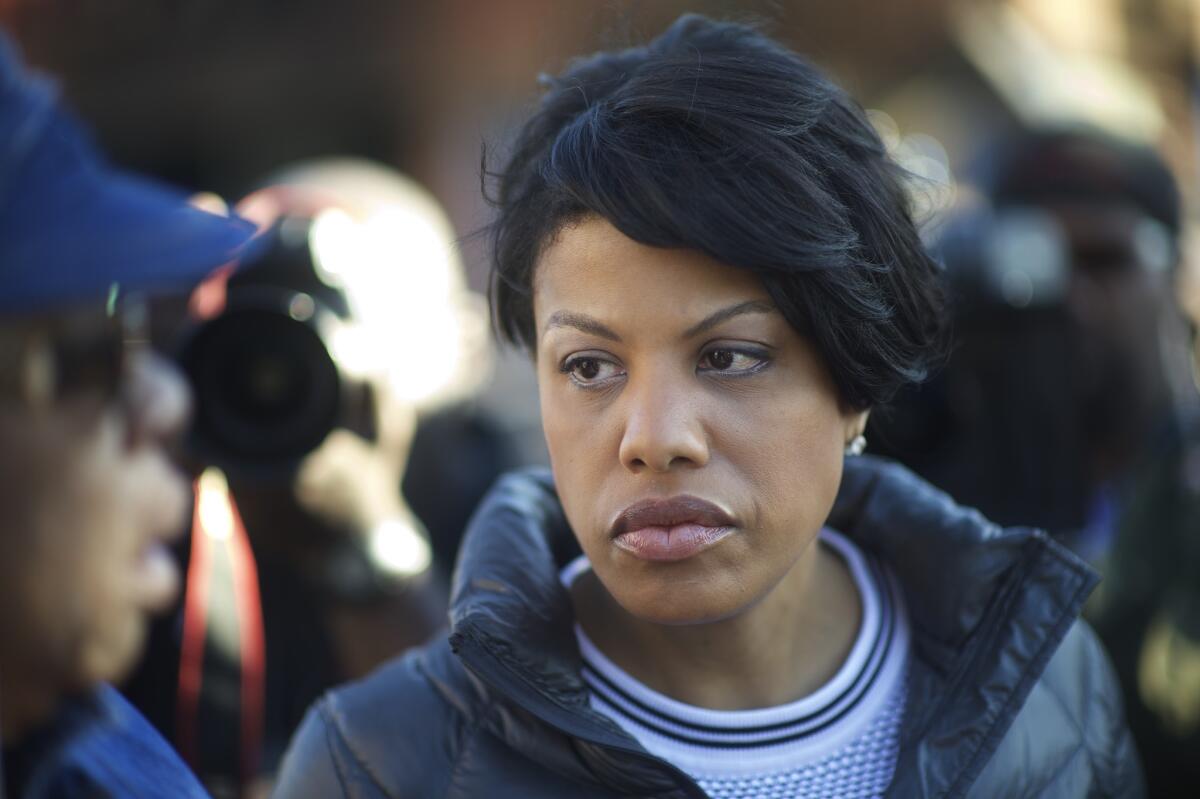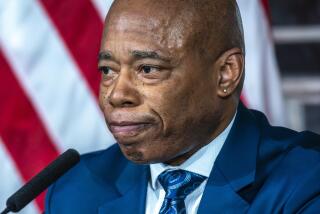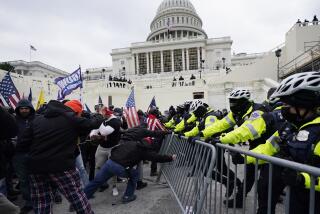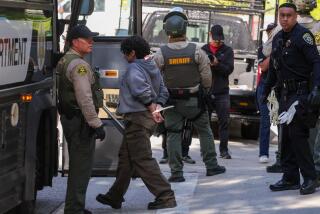Baltimore mayor disputes suggestions she encouraged violence

Even as officials struggle to ensure a return to calm after a night of rioting in Baltimore, the political sparring has already begun.
Did the city move too slowly in seeking help to keep the peace? In comments she made after the death of Freddie Gray, did Baltimore Mayor Stephanie Rawlings-Blake open the door for protests to turn violent?
Gray, 25, was taken into police custody on April 12 in a section of the city where police are viewed with suspicion. He was handcuffed with his hands behind his back and placed in a police van. The van stopped at one point and he was brought out and put in leg irons and placed back in the van, according to city police who are investigating the incident.
Gray’s spine was severed while he was in custody. He slipped into a coma and died a week later.
Police Commissioner Anthony Batts has conceded that Gray should have been buckled into a seat belt and that he should have received medical care early on. Whether any officer will be charged with a crime depends on the investigation, scheduled to be completed by Friday.
The initial demonstrations in the wake of Gray’s death of were peaceful and small. City officials said they were able to handle protests and Rawlings-Blake, who attended Gray’s funeral on Monday, praised the early protesters for acting calmly. She cited Baltimore’s history of peaceful demonstrations.
Then over the weekend violence broke out at a rally that led to 35 arrests and six injured officers. Rawlings-Blake explained her position after the arrests and how the city hoped to cope with the growing unrest.
“I’ve made it very clear that I work with the police, and instructed them to do everything that they could to make sure that the protesters could exercise their right to free speech,” she told reporters. “It’s a very delicate balancing act because while we tried to make sure they were protected from the cars and the other things that were going on, we gave those who wished to destroy space to do that, as well.”
Critics seized on the last part of the quote to argue that the mayor had, in effect, given permission for the protests to grow.
She denied those complaints.
“The very blatant mischaracterization of my words was not helpful today,” Rawlings-Blake told one reporter after the violence escalated on Monday after Gray’s funeral.
“I was asked a question about the property damage that was done. In answering that question I made it very clear that we balance a very fine line between giving peaceful protesters a space to protest,” she said. “What I said is, in doing so, people can hijack that and use that space for bad. I did not say that we were accepting of that. I did not say that we were passive to it. I was just explaining how property damage can happen during a peaceful protest.
“It is very unfortunate that members of your industry decided to mischaracterize my words and try to use it as a way to say that we were inciting violence,” Rawlings-Blake said.
Batts at his news conference on Monday night said police were simply overwhelmed by the size and ferocity of the unrest.
“They just outnumbered us and outflanked us,” Batts said. “We needed to have more resources.”
He said extra manpower would help the city regain control of neighborhoods and enforce a week-long curfew.
That extra manpower, in the form of the National Guard, took to the streets on Tuesday as Baltimore coped with its worst rioting since the 1968 assassination of Martin Luther King Jr. The city of more than 600,000 people has become the symbol of the most intense racial confrontation since last summer’s rioting in Ferguson, Mo., which set off the current wave of protests about the dangers that African Americans say they feel when dealing with police around the country.
Officials on Tuesday put on a tough face, promising to deal forcefully in preventing a second night of rioting.
“We are going to be out in massive force, we are going to be patrolling the streets, we are going to be coming in with up-armored Humvees ... and we will be carrying our weapons,” Maj. Gen. Linda Singh pledged as the Guard moved into position.
“What happened last night is not going to happen again,” Maryland Gov. Larry Hogan told reporters as he toured damaged areas.
The governor said that it took him no more than 30 seconds to declare an emergency and activate the National Guard once the Baltimore mayor requested the state’s assistance.
“We were all in the command center in the second floor of the State House in constant communication, and we were trying to get in touch with the mayor for quite some time,” Hogan told a Monday evening news conference. “She finally made that call, and we immediately took action.”
Asked if the mayor should have called for help sooner, Hogan replied that he didn’t want to question what Baltimore officials were doing: “They’re all under tremendous stress. We’re all on one team.”
During comments as she toured the damaged areas of her city, Rawlings-Blake pushed back against her critics.
“There are always going to be armchair quarterbacks that have never sat in my seat,” she told reporters.
“This isn’t the first emergency that I’ve had to deal with and I know you have to put in the work and manage the crisis on the ground,” she added.
Follow @latMuskal for national news.
More to Read
Sign up for Essential California
The most important California stories and recommendations in your inbox every morning.
You may occasionally receive promotional content from the Los Angeles Times.











